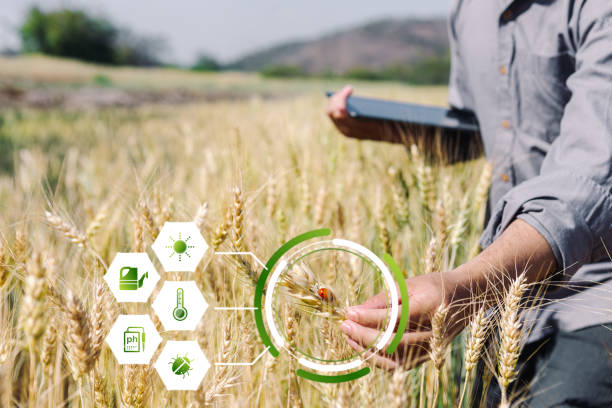Effective Crop Risk Management Strategies for Better Yield

Agriculture is inherently risky due to factors like unpredictable weather, pest infestations, diseases, and market fluctuations. For farmers, managing these risks effectively is critical to safeguarding their crops and ensuring a stable income. Crop risk management involves identifying, assessing, and mitigating risks to maximize productivity and minimize losses. Implementing comprehensive crop risk management strategies can help farmers enhance yield quality and quantity while maintaining financial stability.
Understanding Crop Risk Management
Crop risk management encompasses all the practices and tools used by farmers and agricultural stakeholders to reduce the adverse effects of risks on crop production. These risks can be broadly categorized into:
- Natural Risks: Droughts, floods, hailstorms, temperature extremes, and other climatic events.
- Biological Risks: Pest attacks, diseases, and weed infestations.
- Economic Risks: Price volatility, market access issues, and input cost fluctuations.
- Operational Risks: Labor shortages, machinery breakdowns, and supply chain disruptions.
Effective crop risk management requires a holistic approach that combines traditional farming knowledge with modern technology and financial tools.
Key Strategies for Crop Risk Management
Farmers can employ several strategies to manage risks at various stages of crop production:
1. Diversification:
Growing multiple crops or varieties helps spread risk. If one crop fails due to disease or weather conditions, others might still thrive, balancing overall production.
2. Use of Resistant Varieties:
Planting pest and disease-resistant crop varieties reduces vulnerability and dependency on chemical controls, promoting sustainable farming.
3. Crop Rotation and Soil Management:
Rotating crops and maintaining soil health through organic amendments and proper fertilization enhance resilience against pests and improve yield stability.
4. Weather Monitoring and Forecasting:
Access to reliable weather forecasts allows farmers to plan irrigation, planting, and harvesting activities to avoid adverse conditions.
5. Integrated Pest Management (IPM):
Combining biological, cultural, mechanical, and chemical control methods reduces pest damage while minimizing environmental impact.
6. Irrigation Management:
Efficient water use and drought-resistant practices ensure crops receive adequate moisture even during dry spells.
Financial Tools in Crop Risk Management
In addition to agronomic practices, financial instruments play a vital role in managing crop risks:
Crop Insurance:
Crop insurance provides financial protection against yield loss due to natural disasters, pests, or diseases. Various schemes offer coverage tailored to specific crops and regions, helping farmers recover quickly from losses.
Forward Contracts and Futures:
These market tools allow farmers to lock in prices for their crops ahead of harvest, reducing exposure to price volatility.
Access to Credit:
Timely credit facilitates investments in quality seeds, fertilizers, and technology that enhance crop resilience.
Role of Technology in Crop Risk Management
Modern technology is transforming crop risk management with innovative solutions:
- Remote Sensing and Drones: Enable real-time monitoring of crop health, pest infestations, and soil moisture.
- Mobile Apps: Provide instant access to weather updates, market prices, and advisory services.
- Data Analytics: Help predict disease outbreaks and optimize resource use.
- Automated Irrigation Systems: Conserve water and improve efficiency.
Adopting these technologies helps farmers make informed decisions and respond proactively to risks.
Importance of Government and Institutional Support
Governments and agricultural institutions play a crucial role by offering:
- Subsidized crop insurance schemes.
- Training programs on risk management techniques.
- Research and development for resilient crop varieties.
- Infrastructure support like irrigation and storage facilities.
Collaborative efforts enhance the overall effectiveness of crop risk management at the community and national levels.
Challenges in Crop Risk Management
Despite available tools and strategies, farmers face challenges such as:
- Limited awareness and access to financial products.
- High costs of technology adoption.
- Climate change intensifying weather-related risks.
- Fragmented landholdings limiting economies of scale.
Addressing these barriers requires coordinated efforts between policymakers, financial institutions, technology providers, and farmers.
Conclusion
Crop risk management is indispensable for ensuring agricultural productivity and farmers’ livelihoods. By integrating diversified farming practices, financial safeguards, and advanced technology, farmers can mitigate the impact of natural, biological, and economic risks. Strengthening government support and improving accessibility to risk management resources further empower farmers to sustain and improve their yields.
In a world facing increasing climate uncertainty and market challenges, effective crop risk management is not just a protective measure—it is a strategic approach for long-term agricultural success. Farmers who proactively manage risks are better positioned to achieve consistent yields, enhance profitability, and contribute to food security.
If you are involved in agriculture or agri business, exploring and implementing crop risk management strategies is essential to future-proof your operations and build resilience against unpredictable challenges.
Moreover, collaboration among stakeholders is key to advancing crop risk management. Farmers, cooperatives, agronomists, and agri-tech startups must work together to create scalable, accessible, and affordable solutions. Leveraging local knowledge alongside digital innovations can bridge the gap between traditional practices and modern risk mitigation techniques. Continuous education and capacity-building programs empower farmers to adapt to evolving risks and make informed decisions. As climate variability and market dynamics continue to impact global agriculture, integrating crop risk management into everyday farming operations becomes not only beneficial but essential. A resilient agricultural system starts with informed, prepared, and well-supported farmers at its core.



